The Depression glass mass-production was at its peak from the late 1920s to the 1940s. Over twenty famous manufacturers, including Hocking Glass, Federal Glass, and Macbeth-Evans, created Depression glass in attractive colors and patterns.
Green is the second most popular color, and you can find it in 110 different patterns of 150 ever produced. If you are one of the admirers, you should check the vintage green Depression glass value guide before starting your collection.
Table of Contents
What Is Depression Glass?
Unlike hand-cut glass, Depression glass resulted from mass production during the Great Depression in the US. It was typically colored, widely available in North America, and affordable. Green Depression glass came in a few shades, including:
- Pale
- Yellowy-green like Vaseline
- Rich, dark emerald green
This cheerful color symbolized the hope and prosperity people needed in those horrible times. The most popular colors were light to medium green, clear, amber, and pink. On the other hand, you can find rare colors like:
- White milk
- Amethyst
- Jadeite
- Canary yellow
- Red
- Cobalt blue
- Opaque black
Since these colors were not widely produced, they are harder to find on the current market, and such glassware is typically more expensive. Unlike other shades, green Depression glass contained uranium in a low percentage, causing it to glow fluorescent green under ultraviolet light.
Interestingly, numerous glass companies offered this affordable patterned glass before the stock market crash of 1929, but it became widely popular only after it. Over twenty manufacturers produced Depression glass, but most were located in the Eastern and Midwest parts of the US.
Nowadays, Depression glass is collectible, inexpensively mass-produced tableware most American households had from the late 1920s to the 1940s.
If you want to make a collection of this glassware, you should be careful. Terms Depression style and Depression era-style refer to new reproduced pieces, often produced in China.
Depression Glass Characteristics
Manufacturers that produced Depression glass dishes in the 1930s or later were recognizable for the colors and shapes they made.
Color

You can find Depression glass dishes in every possible color, including crystal, yellow, amber, green, pink, and blue. However, there are also pieces in tangerine and alexandrite hues. They were unpopular in those times, and their production ended fast, making them rare and desirable among collectors.
Green Depression glass was the most desirable color besides pink. You can find it in about 110 patterns of 150 typical for this glass design. Interestingly, only one appeared exclusively in green color under the name – Rose Cameo pattern. All other green patterns were also made in crystal, yellow, or pink glass.
When you want to estimate a Depression glass piece, you need to check whether the pattern you have matches the particular color. That is the best way to distinguish the original model from reproduction.
Pattern
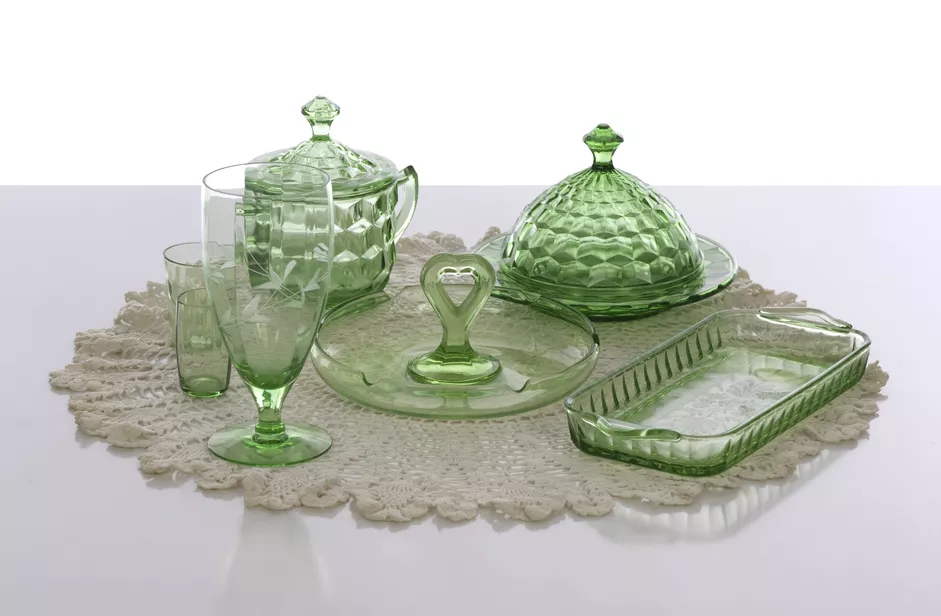
Manufacturers produced Depression glass dishes for about thirty years, and you can find more than a hundred different patterns. Virtually every company had its signature patterns, including the most popular:
- American Sweetheart pattern produced from 1930 to 1936
- Cameo pattern produced from 1930 to 1934
- Princess pattern produced from 1931 to 1934
- Mayfair pattern produced from 1931 to 1937
- Royal Lace pattern produced from 1934 to 1941
Besides these famous designs, you can also enjoy a few collectible ones, like:
- Cherry blossom pattern
- Daisy pattern
- Cloverleaf pattern
- Lotus pattern
- Circle pattern
- Art deco pattern
- New century pattern
- Geometric pattern
- Sharon cabbage rose pattern
- Colonial knife and fork pattern
- Colonial fluted rope pattern
- Doric pattern
Silhouette
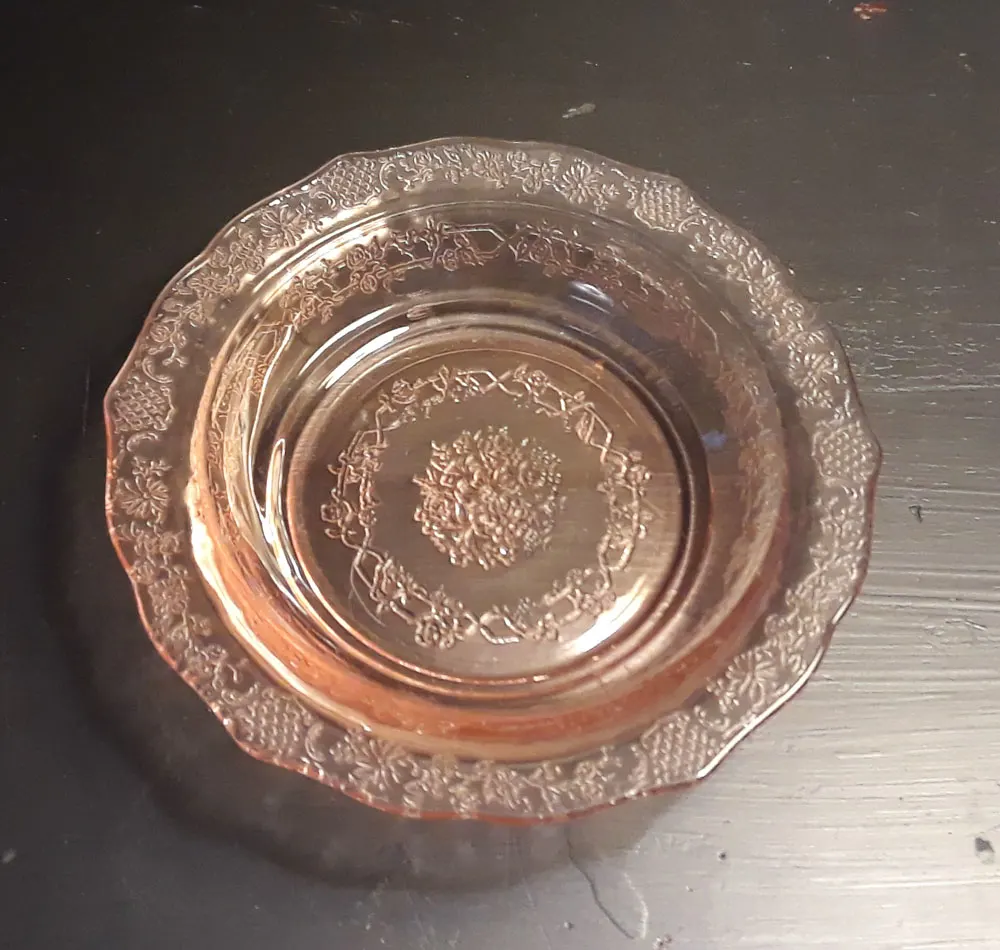
You should check the shape guidelines displaying the Depression glass plate or bowl’s general outline. Most pieces have scallops, dips, and beads on the edges, but you can find a plate with a smooth edge with occasional drops. Finally, you should pay attention to apparent details, swirls, and arcs.
Condition
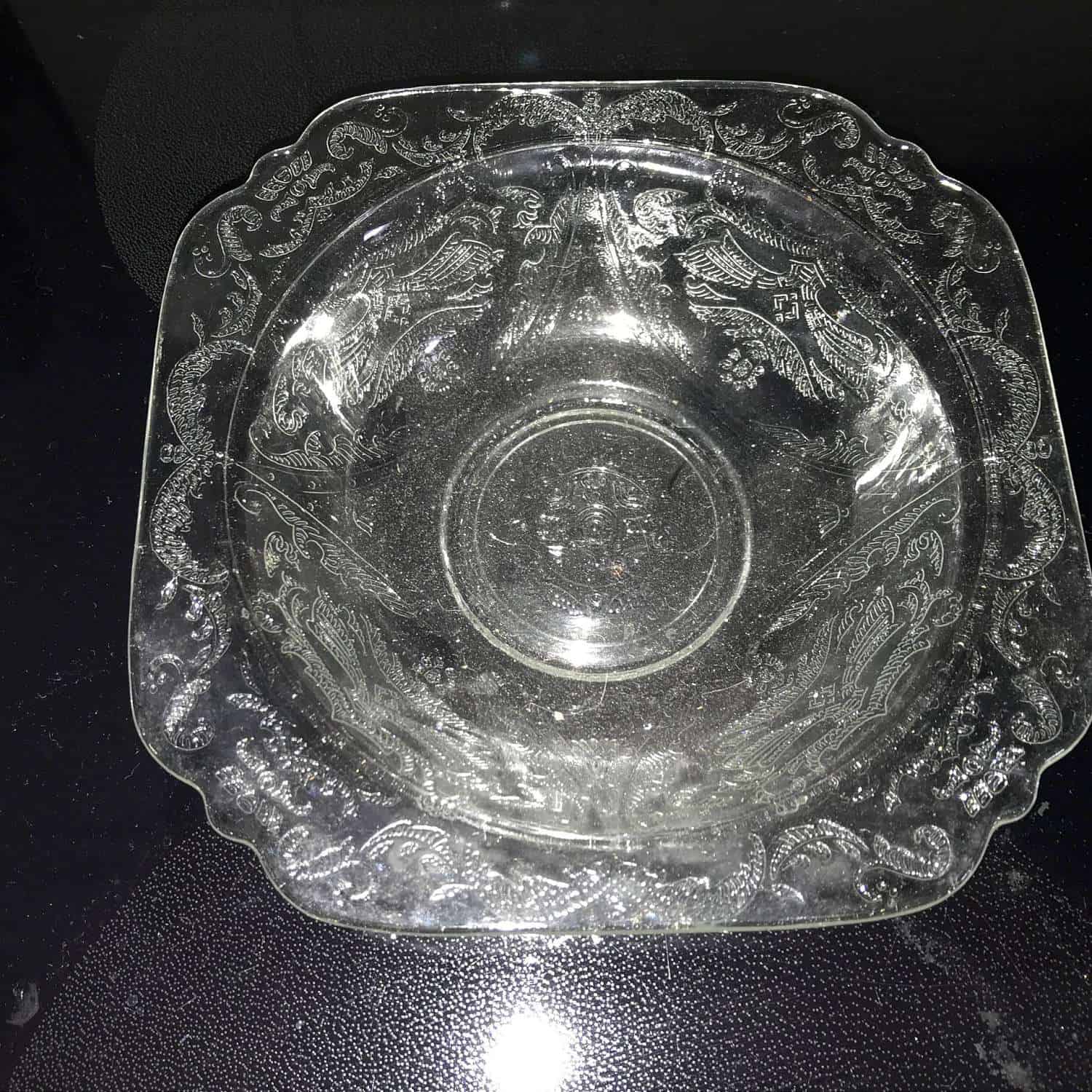
Depression glass was produced quickly without particular attention so that you can notice numerous flaws. However, those imperfections rarely affect these dishes’ value since most collectors appreciate them.
Interestingly, flaw occurrence is the best way to identify this glass type. The most common are:
- Inconsistent coloring
- Molding flaws
- Tiny bubbles on the glass surface
- Traces of straw on the base
- Scratches as a result of regular use
While those flaws are typical and even desirable for dishes made of Depression glass, you should avoid pieces with visible signs of repair.
Reproductions
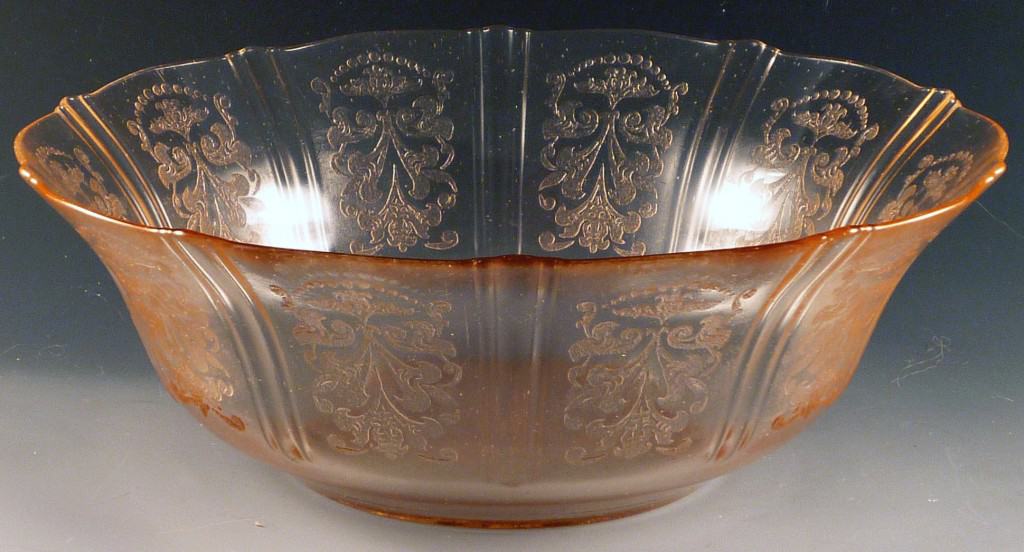
Be careful when buying glassware made of Depression glass since numerous reproductions have appeared on the market and sold as antiques. Always check for the visible seams typical for the original glass and look for traces of use.
Determining Vintage Green Depression Glass Value
There are a few ways to determine green Depression glass value. You can find any of the numerous informative books available on the market, including excellent old books that are no longer printed.
Another option is to ask an expert from a local antique store or an online dealer for help. Always check prices reached at online auctions since some offered on eBay or Etsy are unrealistically high.
Valuable vintage green Depression glass |
||
| Year | Glassware | Price |
| / | Green satin clown jar | $200 |
| The 1930s | French uranium green bistro gift set | $185 |
| / | Uranium Art Nouveau green antique vase | $170 |
| 1938 to 1944 | Anchor Hocking Waterford | $85 |
| 1930 | Cherry blossom by Jeanette Glass | $65 |
| The 1930s | Sandwich green tray | $42.75 |
| 1934 to 1936 | Colonial green butter dish | $40 to $70 |
| / | Dark green bowl | $35 |
| 1929 to 1933 | Green pitcher Block optic | $30 to $100 |
| 1934 to 1941 | Royal lace-green creamer | $30 to $40 |
| The 1930s | Clean-lined small green pitcher | $29 |
| 1936 to 941 | Royal lace-green by Hazel Atlas | $29 |
| / | Royal-green cup and saucer set | $20 to $28 |
| 1934 to 1941 | Royal lace-green dinner plate | $20 |
| 1950 to 1959 | Green platter with daisy pattern | $20 |
| 1930 to 1934 | Anchor Hocking cameo | $17 |
| The 1930s | Colonial block-footed green tumbler | $10 to $30 |
| 1929 to 1933 | Green sugar bowl Block Optic | $10 to $20 |
| 1931 to 1936 | Georgian green sherbet dish | $10 to $15 |
| 1930 to 1939 | Poinsettia pattern glass | $9.5 |
| 1929 to 1933 | Green cup Block Optic | $5 |
| 1929 to 1933 | Green sherbet dish Block Optic | $4 to $5 |
| 1925 | Diamond pattern green sugar bowl | / |
There is a list of the most expensive vintage green Depression glass pieces you can find on the current market. However, you can probably get a better deal at flea markets or garage sales.
Green satin clown jar
Although the manufacturer and production year are unknown, the price of this uranium clown jar is an impressive $200. It is a rare and unique satin green piece suitable for every collection.
French uranium green bistro gift set
Since neon green is the rarest color of Depression glass, collectors are prepared to pay a lot for pieces like this gift set. It was produced in the 1930s in France, and you could buy it at the price of $185.
Uranium Art Nouveau green antique vase
Since uranium glass appears pale yellowish-green in the daylight, it became famous under the name Vaseline glass. However, it becomes a glowing neon green under LEDs or black light. This beautiful Art Nouveau vase made by an unknown manufacturer will cost you $170.
Anchor Hocking Waterford
You can find this attractive item on eBay for $85. The elegant green shade was popular from 1938 to 1944, but you can also find clear pieces if you prefer that style.
Colonial block-footed green tumbler
The Hazel Atlas company produced these items in the early 1930s. Their price was $75 a few years ago, but you can find them for approximately $10 to $30 on the current marketplace.
Cherry blossom by Jeanette Glass
Jeanette Glass designed this beautiful ornamental dish with a trendy cherry blossom design. It was produced in 1930, and you can find it on the current market for $65.
Sandwich green tray
This delicate green sandwich plate produced in the 1930s is challenging to find. One piece is available on Etsy for $42.75, so you can buy and use it as a jewelry holder.
Colonial green butter dish
The Hocking company produced this two-part dish from 1934 to 1936. Collectors adore this piece because of its ornamental and unique design. You can find one for about $40 to $70.
Dark green bowl
This vintage emerald green bowl is often available on eBay for $35. It is desirable among collectors because of its unique and rare green shade.
Green pitcher Block Optic
The Hocking company produced this classy 8 inches (20.3 cm) tall pitcher that held 54 to 80 ounces (1.6 – 2.35 l) from 1929 to 1933. Fifteen years ago, the bigger one was worth about $100, but you can find smaller models on Etsy for only $30 to $60 nowadays.
Royal lace-green creamer
Hazel Atlas glass produced this elegantly ornamented creamer from 1934 to 1941. It is pretty rare nowadays, but a piece you manage to find will cost you about $30. Sometimes, this dish comes in a set with a sugar bowl for over $40.
Royal lace-green cups
Hazel Atlas created these fragile royal lace cups and sold them from 1936 to 1941. They are among the most desirable Depression glass patterns ever made. Since pink and cobalt blue pieces were produced longer, green ones are more valuable and cost about $30.
Clean-lined small green pitcher
This small Art Deco green pitcher features uncomplicated geometric forms without ornate details typical for the period before the 1930s. You can find it on eBay for about $30.
Royal green cup and saucer set
Vintage green Depression glass cups produced in the 1930s are widely available on the market, but not many of them are beautiful like this one. You can buy this delicate piece for $20 to $28.
Royal lace-green dinner plate
The Hazel Atlas glass company produced this 9.87 (25 cm) in diameter green dinner plate model from 1934 to 1941. The Royal lace pattern is popular and available, and such a piece will cost you only $20.
Daisy pattern green platter
A vintage light green platter with a recognizable delicate daisy pattern was produced from 1950 to 1959. You can find it on eBay for approximately $20.
Anchor Hocking cameo
Anchor Hocking created an anchor cameo with florals and swag patterns during the Great Depression. The company was selling this Depression glass type from 1930 to 1934. This classic and elegant piece is available for less than $20.
Green sugar bowl Block Optic
You can find three sugar bowl types with this pattern on the current market for $10 to $20. They include a tall footed cone, a footed bowl, and a mug-like dish in a few colors.
This dish was produced from 1929 to 1933 and sometimes came in a set with a cream pitcher. It is worth about $30 on the current market.
Georgian green sherbet dish
This Georgian (Lovebirds) pattern is highly desirable among collectors. The Federal glass company produced this particular 3 inches (7.6 cm) tall footed sherbet dish from 1931 to 1936, and you can buy one for $10 to $15 nowadays.
Poinsettia pattern glass
The ornate poinsettia pattern glass came in a few colors, but the green one was the most popular. You can find this glass produced in the period between 1930 and 1939 for less than $10 on eBay.
Green cup Block Optic
The Hocking glass company produced these green cups from 1929 to 1933. They came with a few different handle styles, and all were abundant on the market. Each piece’s price is approximately $5 nowadays.
Green cone sherbet dish Block Optic
Hocking glass company produced this piece with the simple Block Optic pattern from 1929 to 1933. The single dish value is $4 to $5, but you can find a set of two to six pieces for a similar price per piece.
Diamond pattern green sugar bowl
This bowl in Art Deco design features stylish geometric shapes that reflect light from the facets. It appeared on the market in 1925, but it is unavailable for collectors at the moment.
Summary
Over twenty manufacturers produced depression glass during the Great Depression from 1929 to 1939. They ensured beautiful and inexpensive glassware to worried people, and everyone could get a piece for only five cents. Nowadays, these items are highly collectible and pricey.
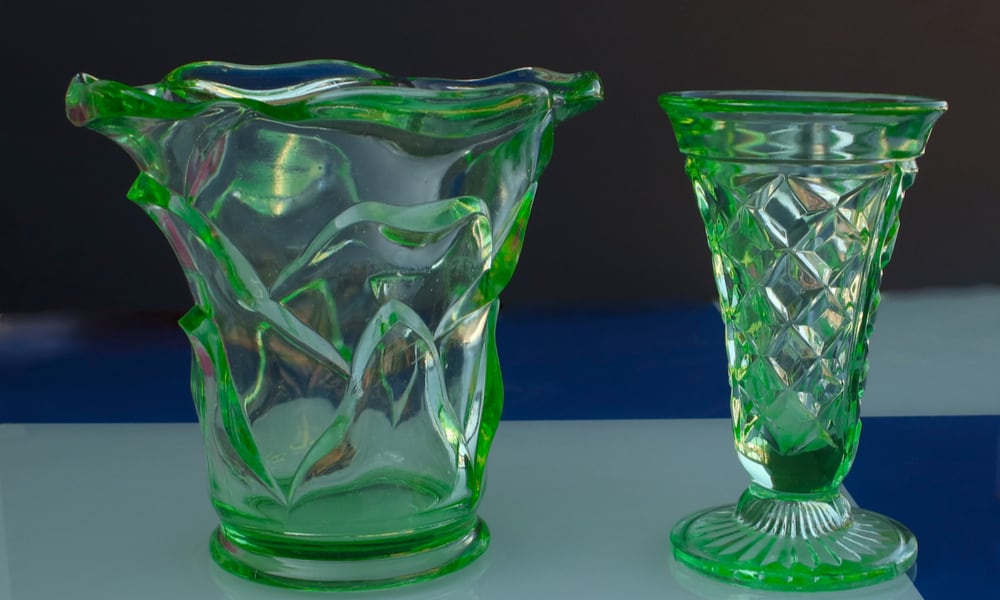
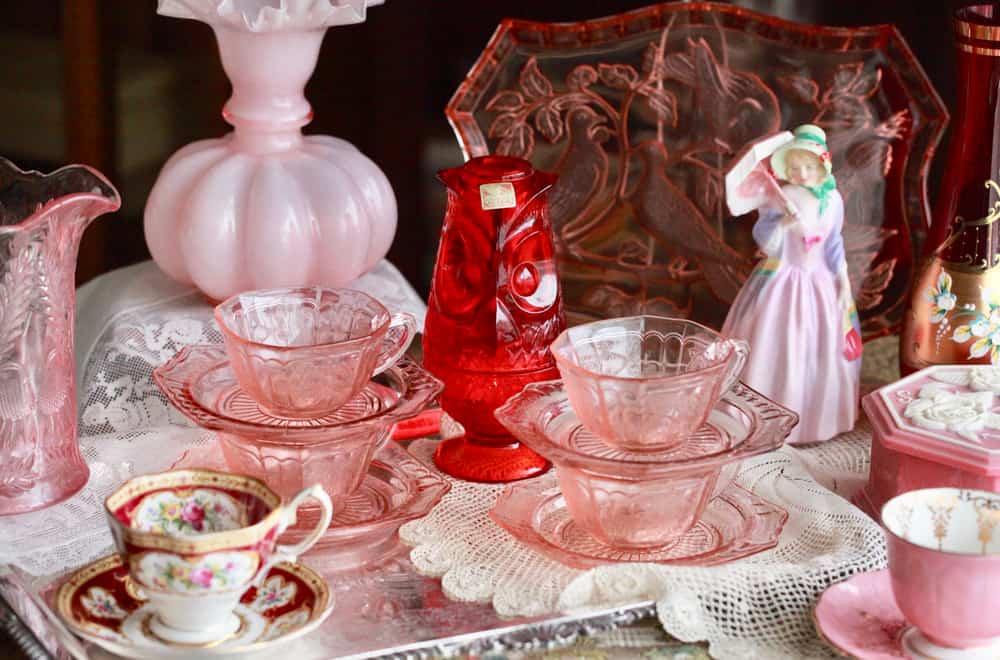
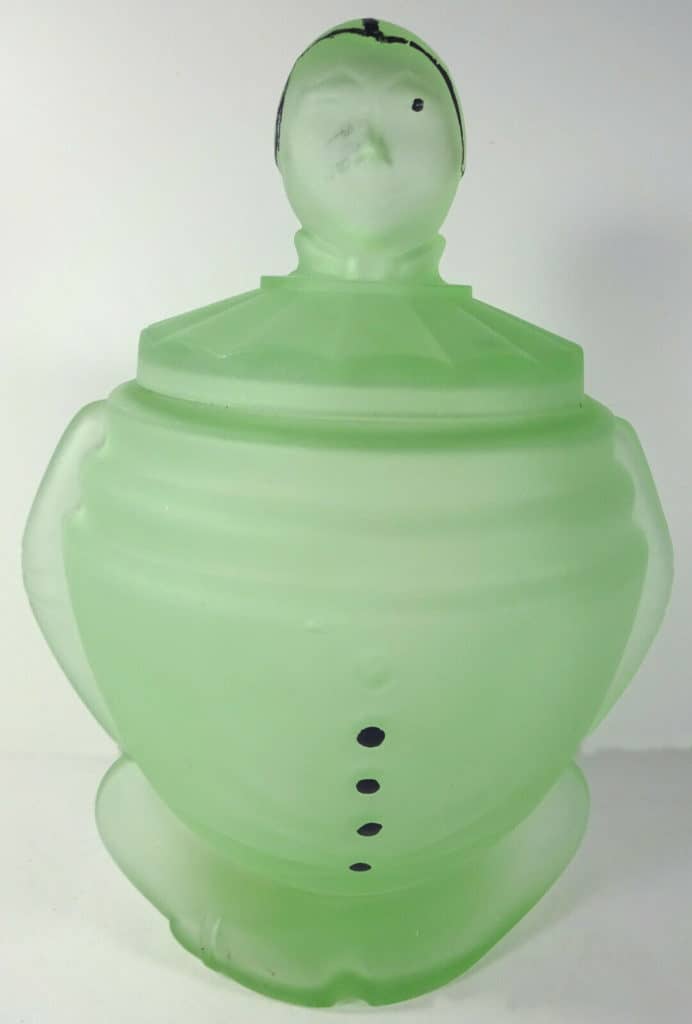
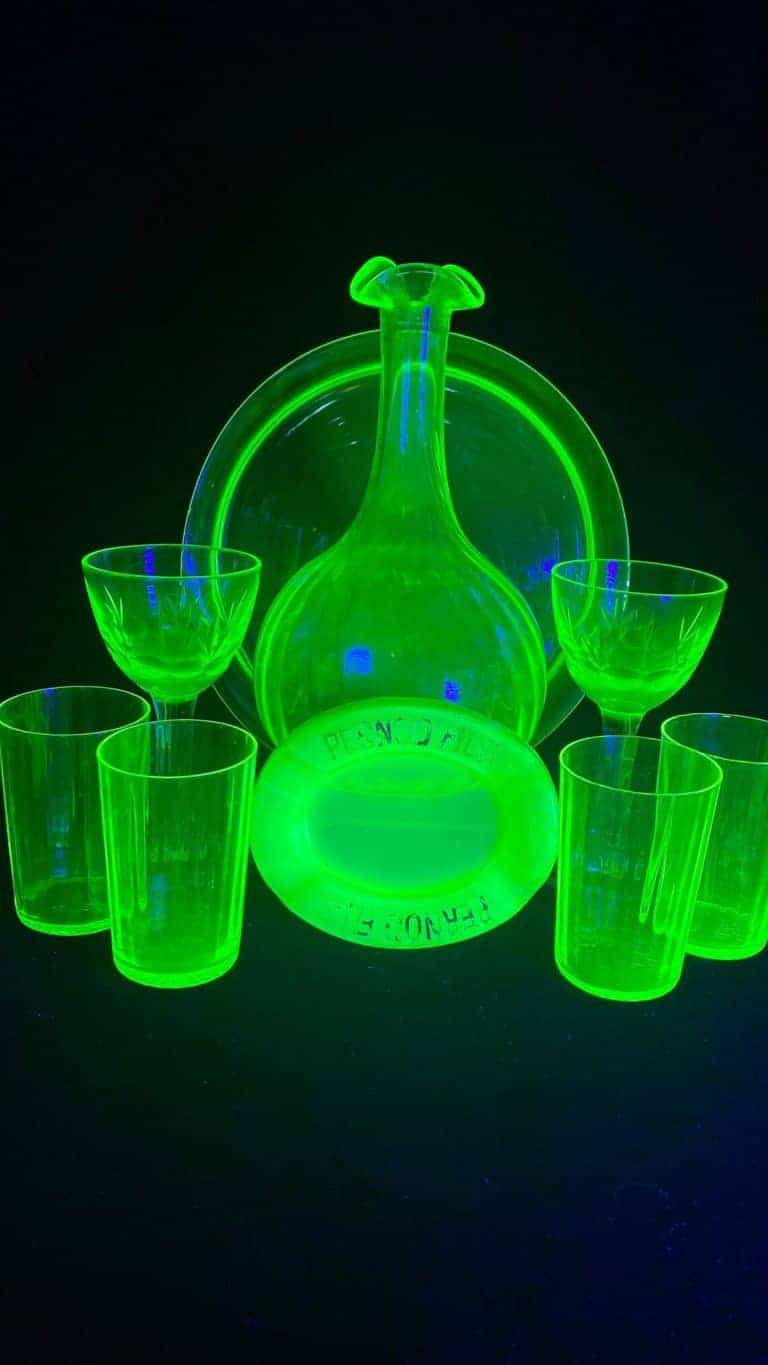
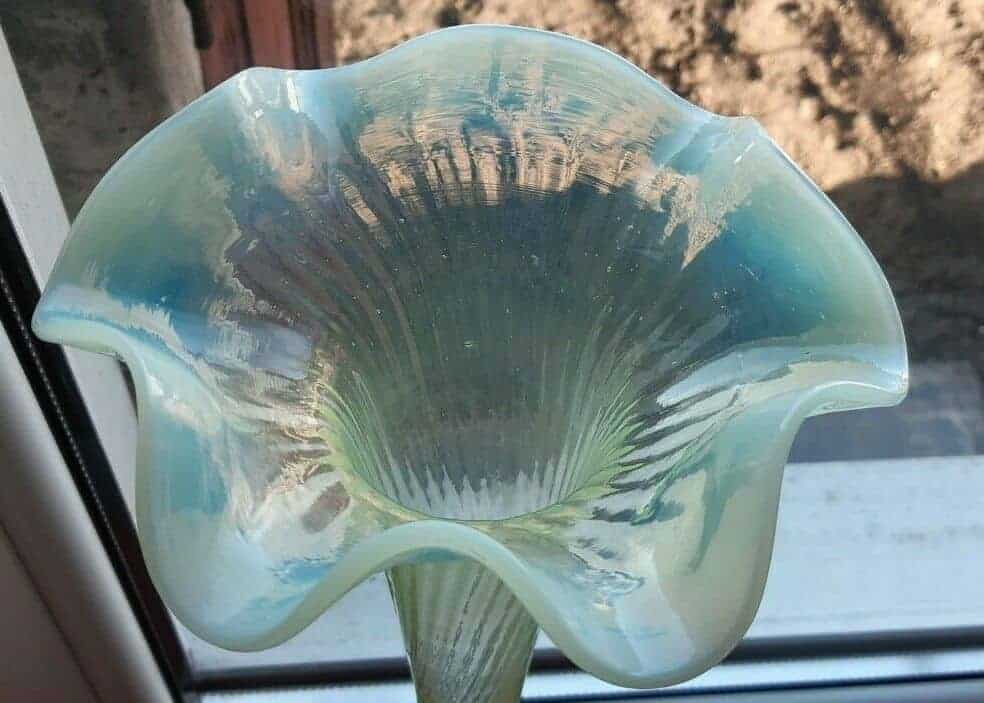
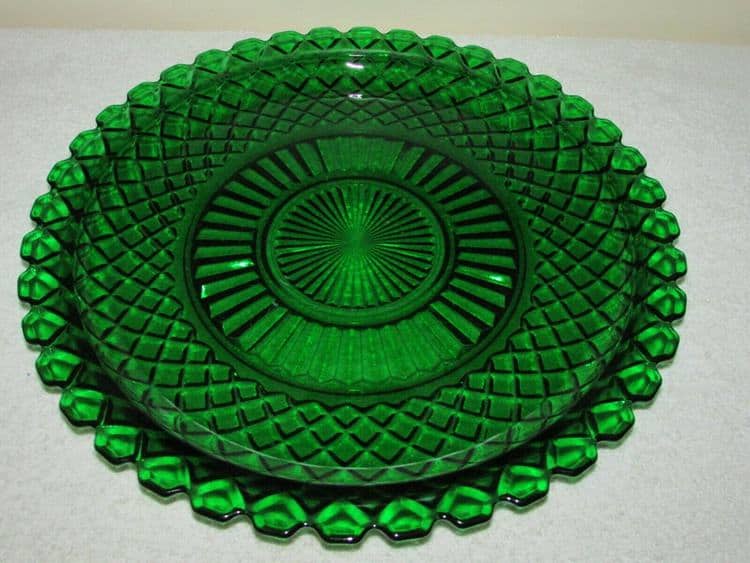
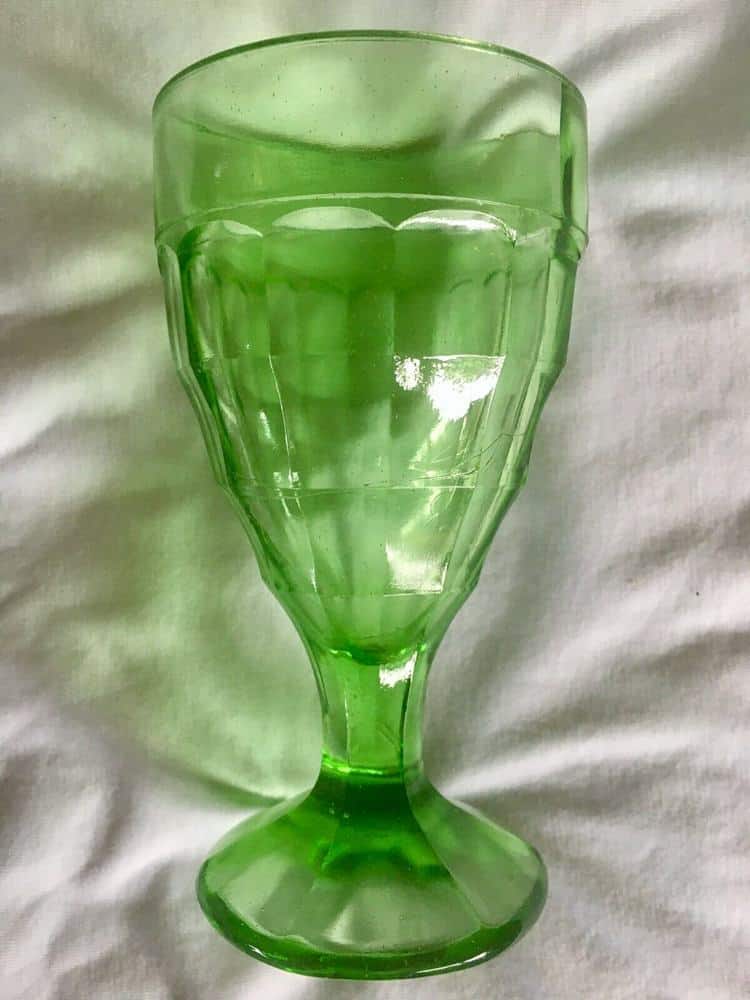
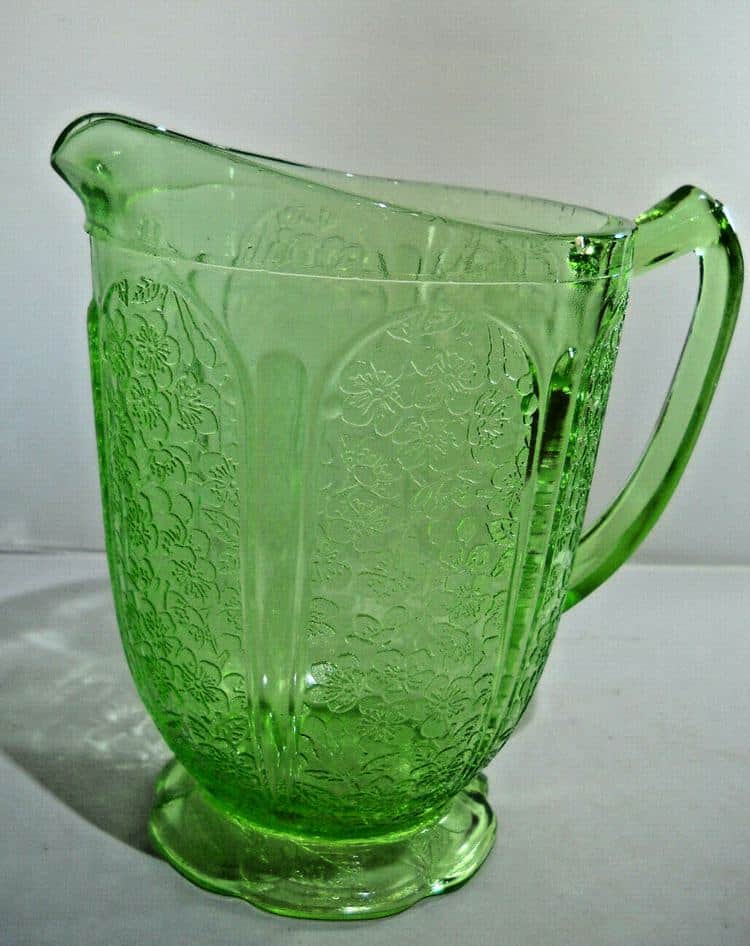
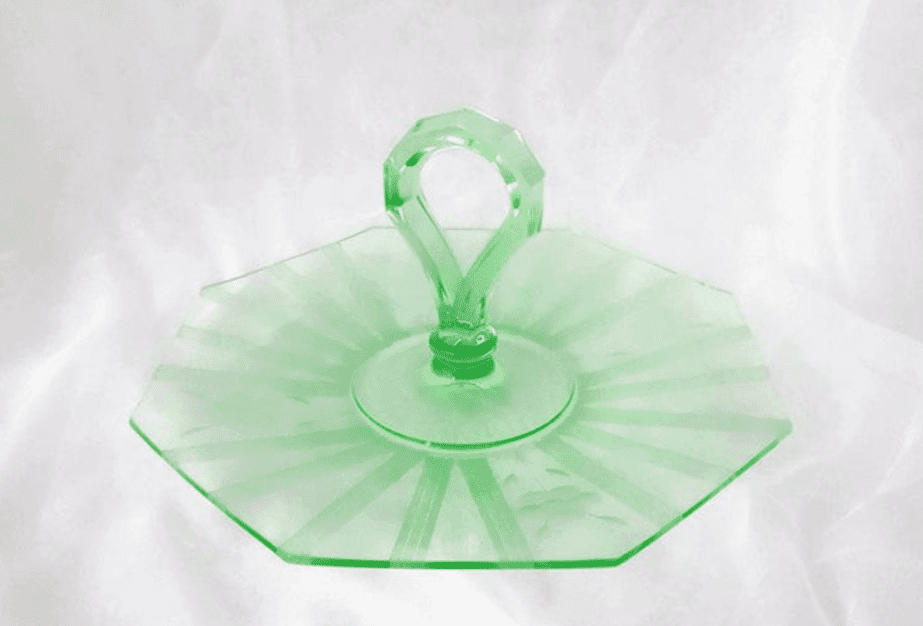
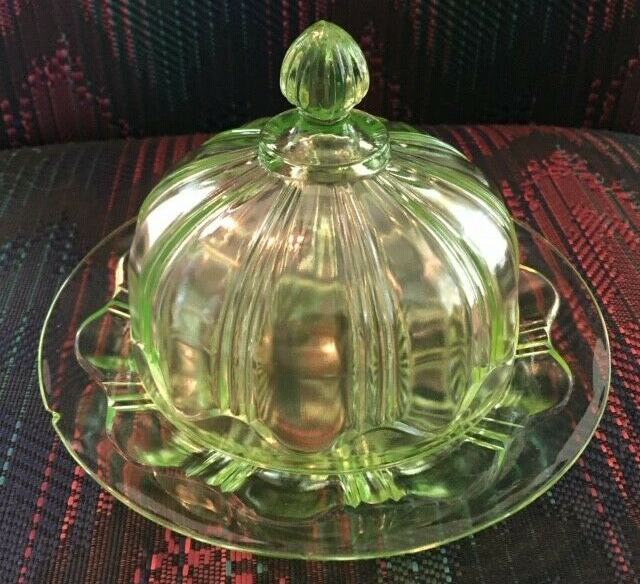
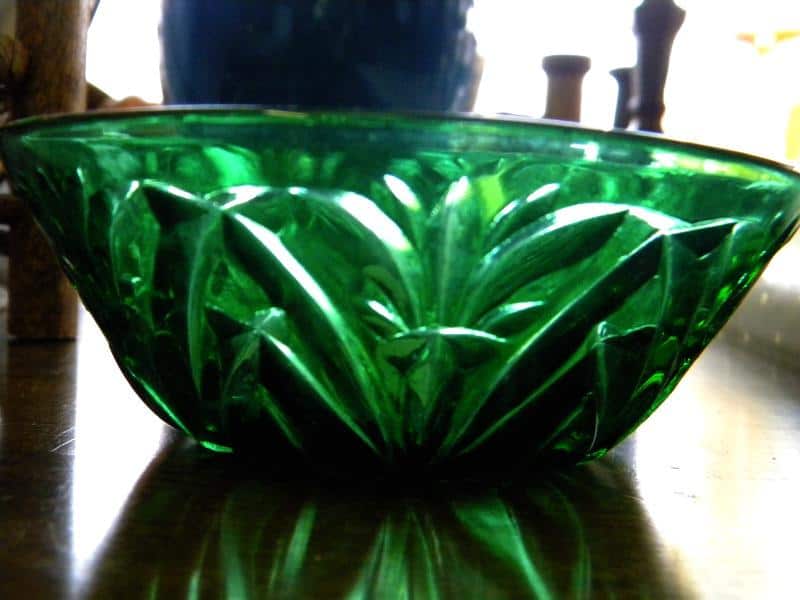
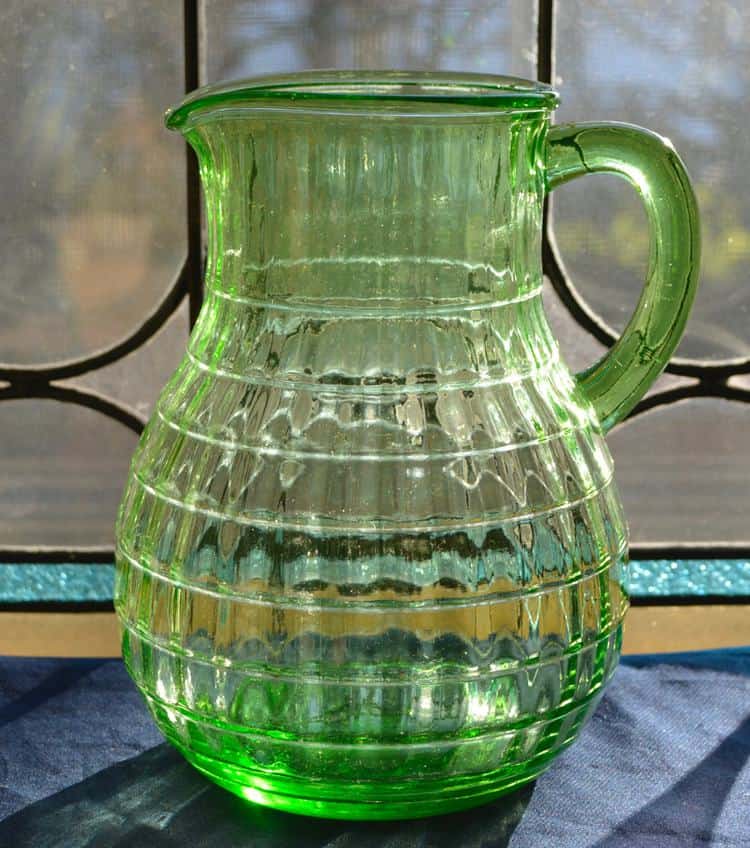
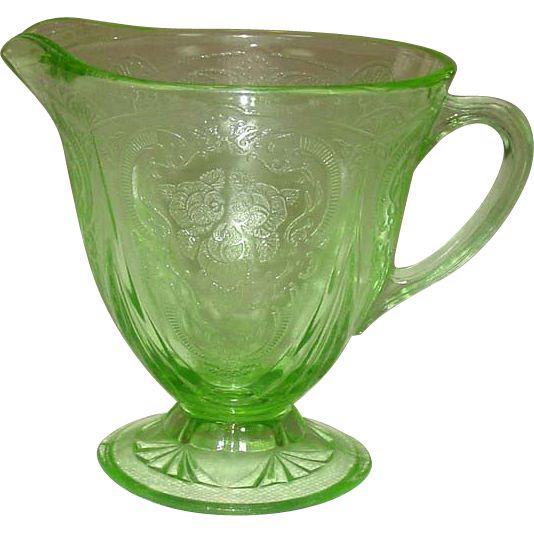
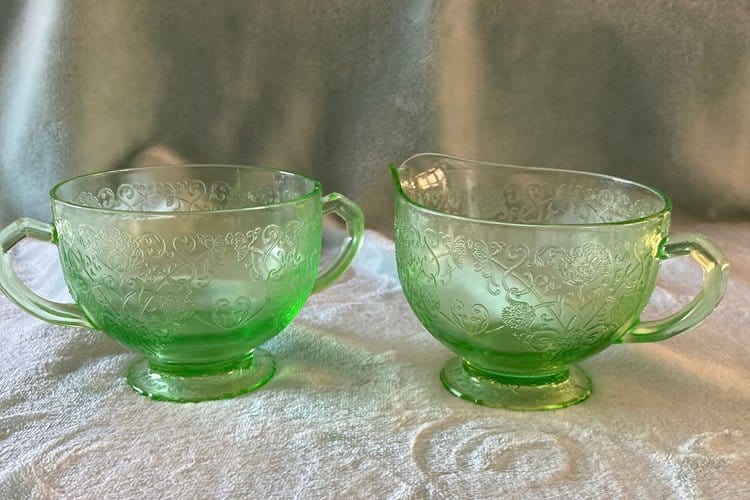
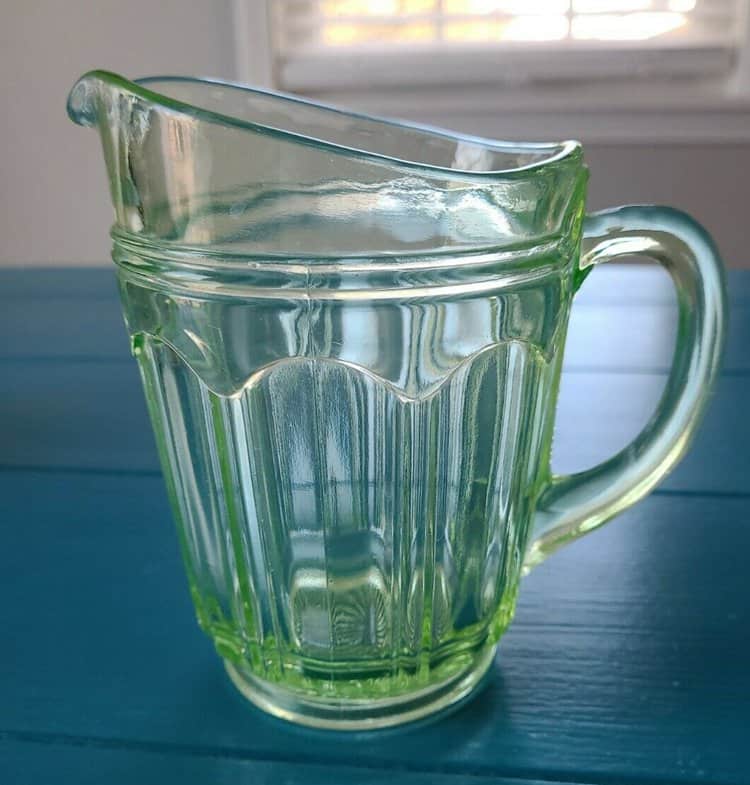
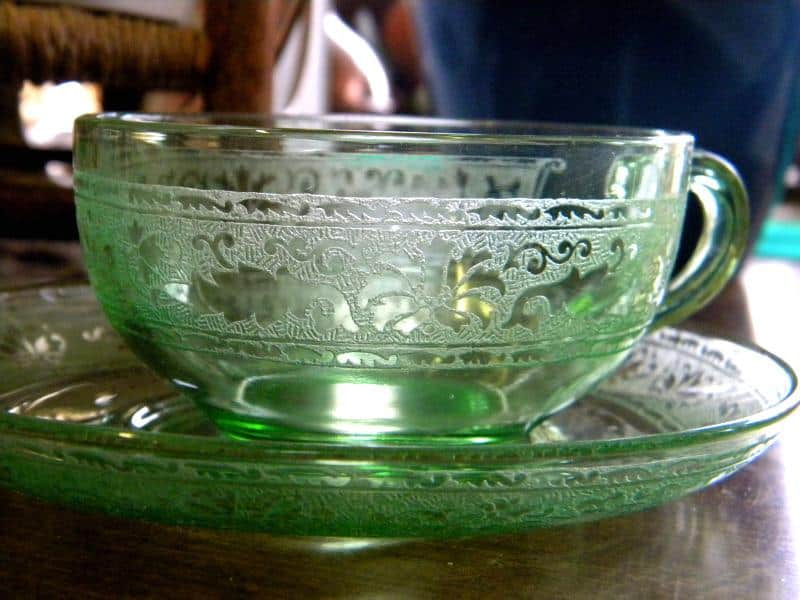
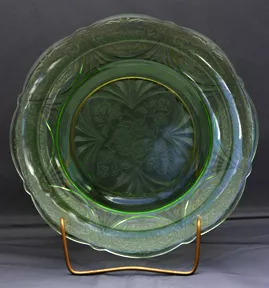
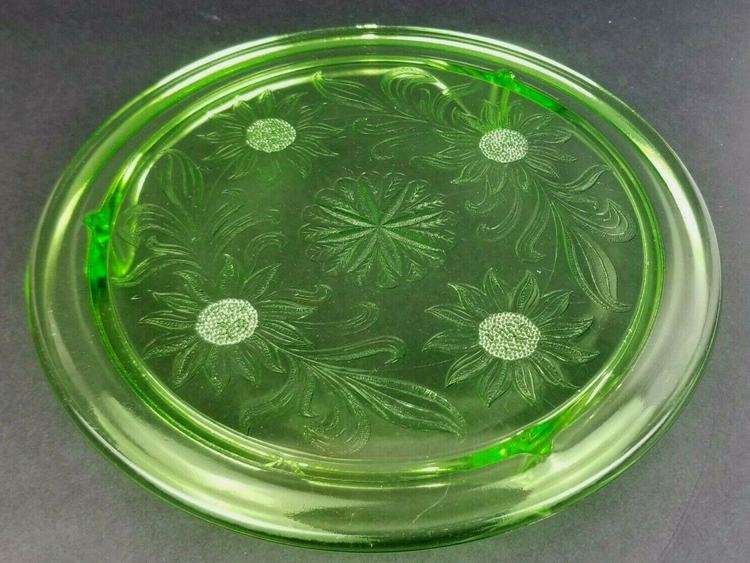
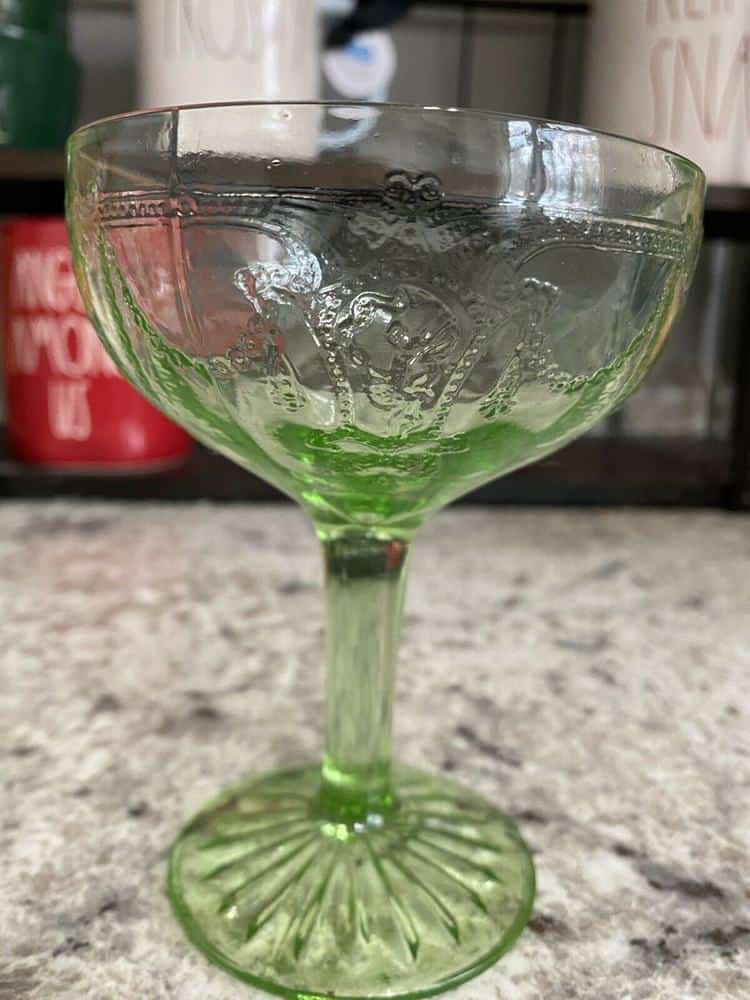
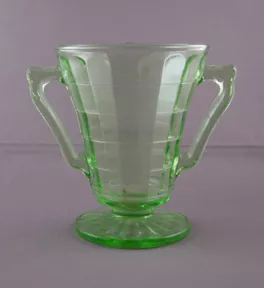
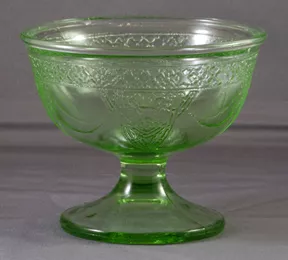
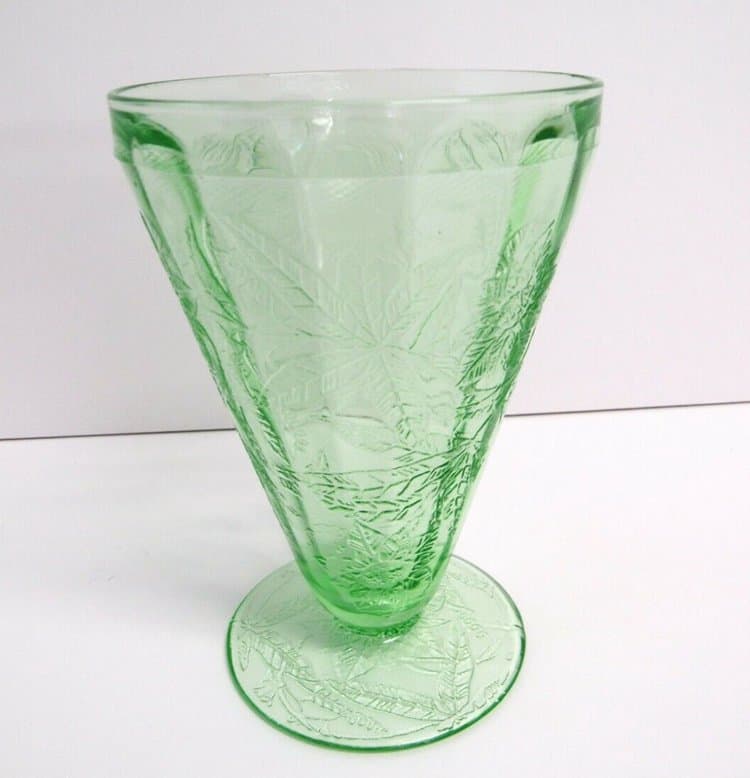
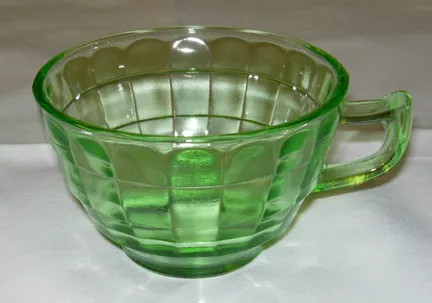
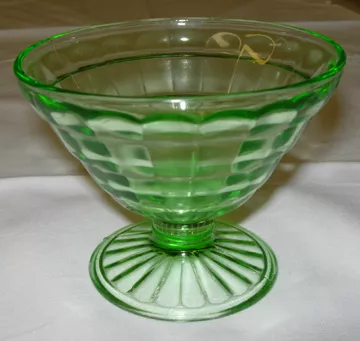
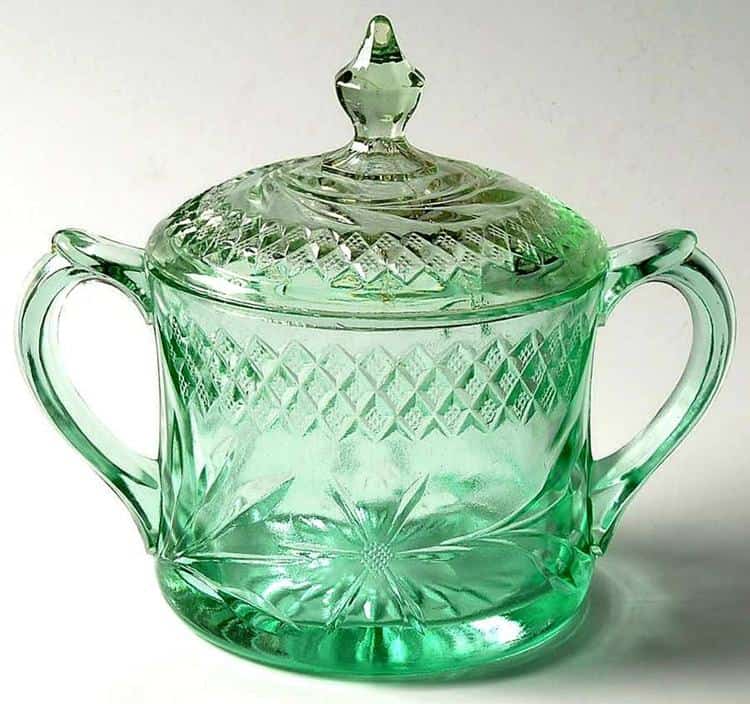
We appreciate you showcasing one of our listings! Cottage Chic Canada